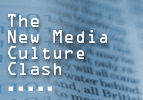



In her article “English web page use in an EFL setting,” Kara McBride recalls P.L. Carrell’s work noting that textual signaling devices (words such as “thus,” “consequently,” and “summary”) help readers detect a heirarchical structure within a print-based composition (2008, 222). These signaling devices supplement the tradition of reading the print pages in sequential order. However, she notes that when encountering web sites or databases, such original structure may be obscured:
However, in the case of reading hypertext-rich Web sites, or when using search engines or databases, the original hierarchical structure of the text(s) may become completely obscured, depending on the how the reader chooses to proceed from one document to another. The burden on the reader is greater in the hypertext context. Charney (1994) argues that by skipping around to different parts of texts, one reads in a less cohesive context, with the effect that one ultimately reads a less cohesive text. Whether or not a reader is able to properly detect the structure of a text depends on the schema by which the reader is operating (222).
This is an antiquated notion of what new media composition or scholarship must be. This position assumes that “writing” that appears in a digital format must recreate the norms of print-based composition. On a sheet of paper, we have little choice but use a linear structure. The technology limits construction. In a digital realm, those constraints fall away.
But in her effort to compare language-based differences in culture (Chilean L2 speakers vs. English L1 speakers), McBride “others” a budding academic culture (new media scholarship). She reifies print, entrenches its dominance, and implies that a digital argument that does not follow print-based rhetorical culture is somehow less than other forms.
However, reader-centered non-linear reading can make information more valuable. Rather than being a slave to the authors reasoning, the reader may follow parts of the argument in her own path and thus build a more meaningful understanding. Of course, the burden for the writer is to construct an argument so that there are many entry/exit points and multiple connections to other elements allowing for a more non-linear, but complete reading. I consider this argument a hybrid form employing both linear and non-linear elements.Introduction • Essential questions • General benefits • Specific benefits • Important notes • Works cited • Home